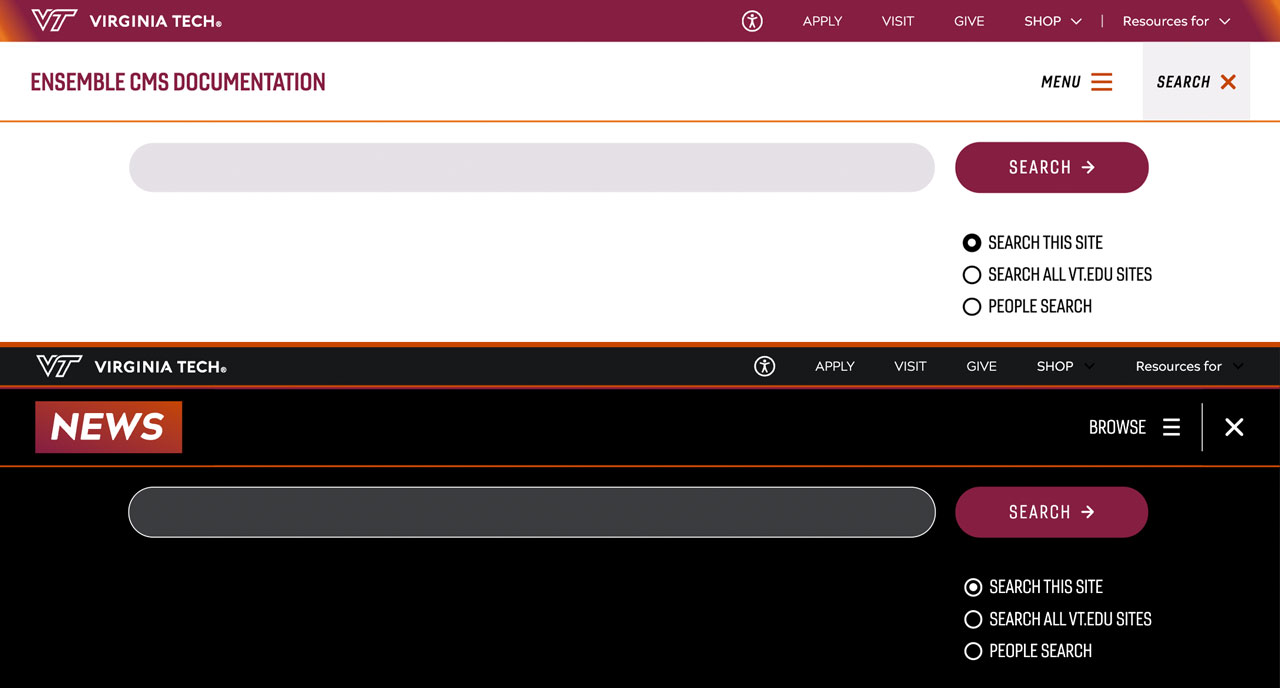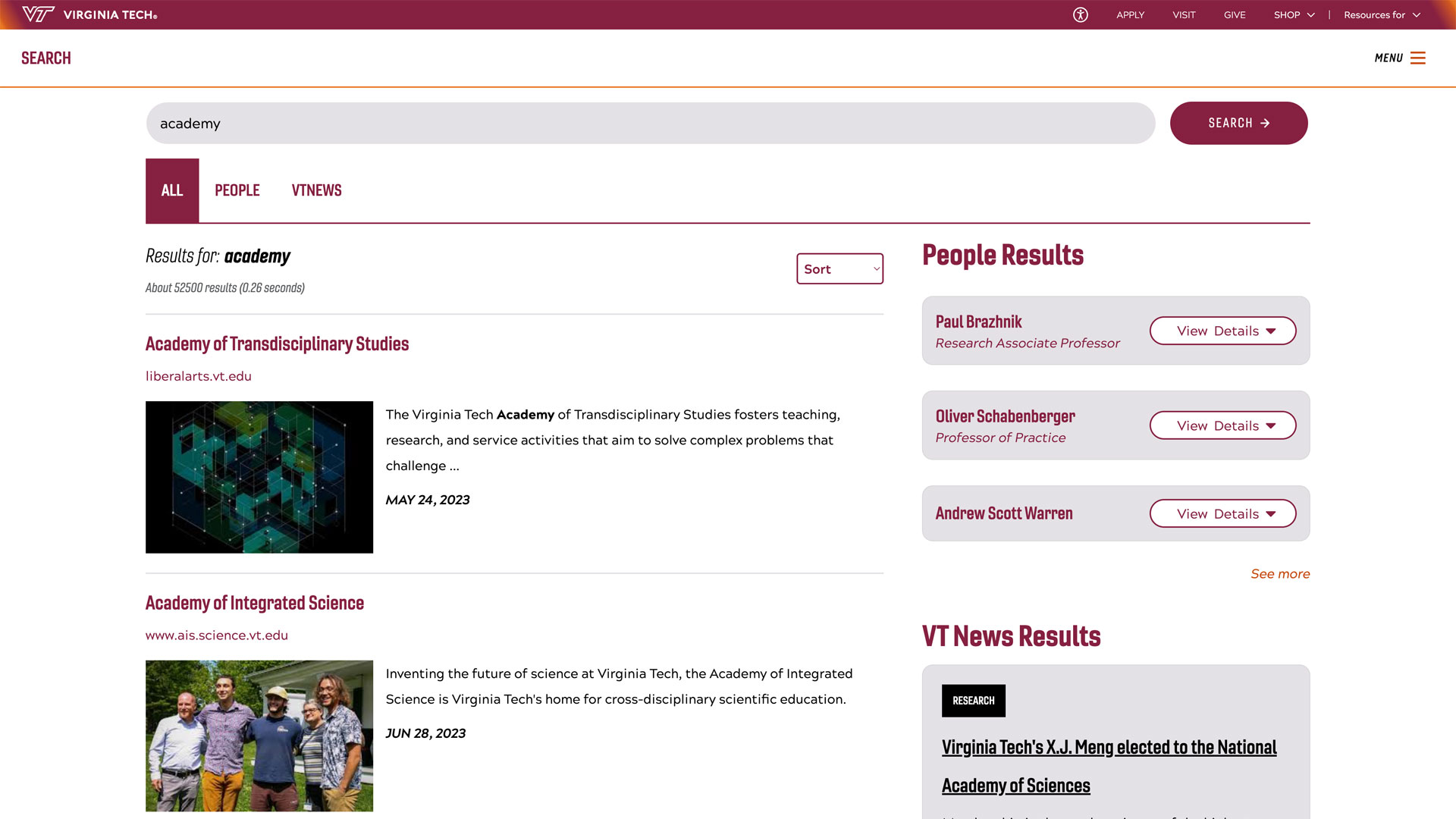Aida Hassani and Helya Sehat, graduate students in the School of Public and International Affairs

Aida Hassani and Helya Sehat, graduate students with the Institute of Policy and Governance (IPG), are getting firsthand experience in engaging with communities as part of a Virginia Tech-led redevelopment planning project in Floyd, Virginia.
The interdisciplinary team, which includes faculty members and undergraduate and graduate students from IPG and the Community Design Assistance Center, is working with state and government officials and community members to investigate how an abandoned textile facility might be redeveloped to address Floyd’s needs.
“What has made this project such a valuable learning experience has been the community’s direct participation — hearing citizens’ problems, comprehending their vision, and collaborating with them rather than making decisions for them,” said Sehat, a doctoral student in the School of Public and International Affairs’ planning, governance, and globalization program. “The process employed for this effort has demonstrated to me how citizen engagement can truly be a collaborative process that recognizes and values resident perspectives.”
How has community engagement at Virginia Tech made an impact on you as a student?
Sehat: I have found that effective engagement serves as a learning experience for all of those involved.
For students, it provides a setting for the application of theories. Working with communities allows professors to help their students grasp the significance of research and theory application while ensuring that their work addresses citizen concerns.
For communities, meanwhile, these collaborations provide new perspectives and offer opportunities to craft creative solutions jointly, while also offering resources and expertise not otherwise available. This sort of meaningful process results in a thriving social ecosystem in which ideas and endeavors exchange places, promoting progress, education, and long-term benefits for all.
Hassani: For students interested in public service and public policy, engagement is — or ought to be — an indispensable part of their graduate education. By engaging with citizens, students quickly learn that community challenges do not have one-dimensional answers.
A hypothesis may seem logical in the abstract, while in practice, addressing it reveals layers of unexpected factors. Such encounters with community processes teach students two essential lessons.
First, they learn they should think beyond simple or obvious answers. They learn to embrace ambiguity, critically analyze situations, and adapt their perspectives rather than searching for how to apply a single, predefined solution.
And second, students discover how important it is to navigate and address social complexities and challenges sensitively.
How do you stay engaged with the community in your work?
Hassani: Community engagement projects at IPG often span several years due to the complexity of the scenarios being studied and the diverse populations involved. Maintaining engagement in this way requires multiple follow-up sessions.
For instance, in the Floyd project, after convening a community engagement event, we did not consider the process complete. Instead, our team followed up with residents to gather further insights, ensuring that their perspectives will shape the project as it progresses. This is not an imposed action, but rather a deliberate effort to create a platform for continuous and open communication.
Similarly, when conducting surveys, we provide options for virtual or in-person follow-up, allowing community members to expand their input beyond their initial responses, should they wish to do so.
Sustained engagement is essential because residents cannot always share every relevant concern or perspective in a single session, nor, realistically, are all interested or affected citizens likely to be able to one scheduled meeting to provide their thinking. Time constraints, resource limitations, and the evolving nature of research mean that those managing engagement efforts must remain flexible.
Ultimately, staying connected is about ensuring that engagement remains goal-driven and purposeful in ways that support the communities involved.
What is one lesson about engagement that has stuck with you?
Sehat: One of the most important lessons I have learned through my involvement at IPG so far is the value of listening before acting. It is too easy to make assumptions about what a community needs or wants, but genuine connection begins, or should begin, with listening to residents’ voices and then blending our expertise with theirs to act on their priorities.
For example, in the Floyd project, I first anticipated that the neighborhood’s residents would want a site design aimed foremost at enhancing tourism and its associated revenue. However, through our conversations and meetings, I discovered that what they cherished most was the easy charm of their small town.
While the residents with whom we have interacted have uniformly welcomed redevelopment of a site that had become an eye sore, they have been just as interested in ensuring that any reuse of the property does not disrupt their way of life.
This experience has demonstrated to me that real connection with residents necessitates patience, trust, and a willingness to adjust. The most successful community change projects happen when supposed “experts” listen first and work together thereafter with residents as equal partners to envision new possibilities.
Hassani: Community engagement requires significant resources, effort, and patience, and that fact may be perceived by some as “slowing down” the planning process. As a result, engagement is sometimes overlooked or deliberately skipped.
Through my experience, I have learned that as professionals, our role is not to prove the importance of engagement but to ask deeper questions concerning it. When engagement occurs, how can we maximize its effectiveness on behalf of the broader community? What sort of process is appropriate in a specific context? How do we measure its impact? What social conflicts may be occurring in the communities in which we will be engaged, and how can we be mindful of those and respect the diverse perspectives in play while also helping those citizenries address their felt needs?
These questions now shape my understanding of engagement. I believe they help to ensure that participation is purposeful rather than performed as a symbolic exercise.
What does community engagement mean to you, and how can Virginia Tech make it a lasting priority?
Sehat: I believe that the community engagement effort in Floyd has been about creating real, reciprocal relationships between university faculty and students and the populations of the community we have sought to serve. In addition to offering expertise, it is important to listen, cooperate, and work together to find paths forward that are advantageous to all parties.
Because it gives life to the university motto, Ut Prosim (That I May Serve), I think this form of involvement ought to be prioritized. Effective university-community connections increase the relevance of research, offer students practical experience, and enable the sharing of resources and knowledge to address local issues.




